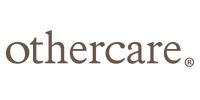While periods are a natural part of life, access to menstrual products is still a challenge for many. Period poverty—the lack of access to sanitary products, education, and facilities—is a growing public health issue in the U.S. that affects millions of menstruating individuals each year.
What Is Period Poverty?
Period poverty refers to inadequate access to:
- Menstrual hygiene products (pads, tampons, liners)
- Safe and clean restrooms
- Comprehensive menstrual education
It can lead to missed school or work, social stigma, and poor mental and physical health outcomes.
Shocking U.S. Statistics
- 1 in 4 teens in the U.S. has missed class due to lack of access to period products
➡️ Source: Women for Women
- Nearly 21% of students struggle to afford period products monthly
➡️ Source: National Education Association (NEA)
- Only 22 states mandate menstrual health education in schools
➡️ Source: Alliance for Period Supplies
Who’s Affected?
Period poverty disproportionately impacts:
- Low-income families
- Students
- Unhoused individuals
- Incarcerated people
- People of color
Why It Matters
Lack of menstrual supplies can result in:
- Increased risk of infections from unsafe alternatives
- Poor self-esteem and social isolation
- Missed academic and economic opportunities
How You Can Help
💜 Donate to support access to menstrual products and education. Every contribution helps break the stigma and support people in need.
👉 Click Here to Donate through the Naturalena Foundation.
You can also:
- Advocate for free menstrual products in schools
- Support brands and policies that prioritize menstrual equity
- Start conversations to normalize period talk
#PeriodPoverty #MenstrualEquity #EndPeriodPoverty #PeriodTalk #WomensHealth #DignityForAll #PeriodAwareness #SupportMenstrualHealth

0 comments